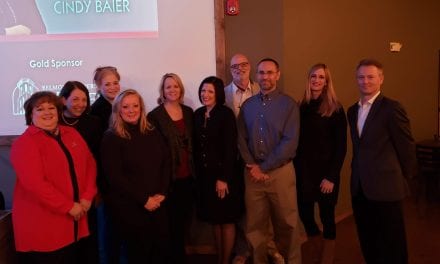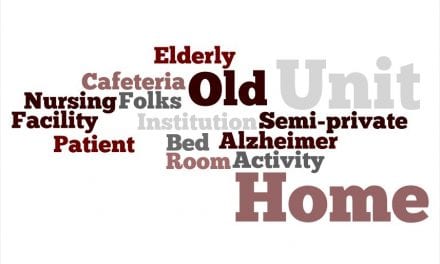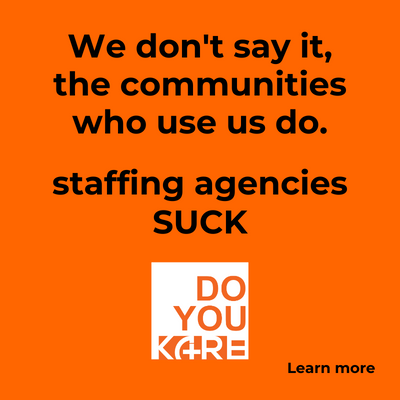I was forced to confront this question: Is innovation and creativity in senior living always necessary or good?
Before I headed to Portland and Seattle a couple of weeks ago I received an invitation from Adam Payne, the marketing director for Mirabella. This is an almost new, 30 story high-rise CCRC located in Portland on the Columbia River. I spent an hour with Adam exploring the community. An added bonus was that Mirabella uses the Vigil emergency call system. The tour included taking a peak at most of the common areas with the highlight being a visit to an occupied top story residence that has an outdoor balcony and spectacular views of Portland and the Columbia river on three sides. It is a vibrant community where lots of residents, at least at this point in the life cycle of the community, are very active. The entrance fees range from $300,000 to slightly over $1,000,000, of which ninety percent is refundable. They are full and have a waiting list that is perhaps 10 years long. It is one of the finest places I have ever visited. I could easily see myself living there.
Is the CCRC Model Dead?
A number of months ago a reader suggested I should do an article that explores the question:
“Is the CCRC model of senior living dead?’
It was a great question and asked at a time when housing prices were just starting to rebound and there were a number of CCRC’s that were in deep financial trouble. While Mirabella is a single data point, its success certainly would suggest that with the right product in the right marketplace the CCRC model can still survive or, more accurately, thrive.
Innovation Overrated
During the course of our conversation Adam asked me what I most liked to write about and I responded that I particularly liked writing about senior living operators who are doing things that are innovative and creative. He followed that question by asking me if I found anything at Mirabella that qualified. It was a good question, I was just not crazy about having to answer it. In truth, I would be hard pressed to say I saw anything that I found to be particularly creative or innovative. And yet I found not a single thing to complain about. The more I thought about it, particularly in the arena of senior housing, it became really important to never forget that providing great service is the number one priority for any senior living community. Innovation is not an absolute requirement to be a great community. Innovation for innovation’s sake should never be the goal because it could, in fact, be detrimental to the residents’ best interests. Innovation should always only be undertaken with the goal of improving the lives of residents. It should be undertaken to solve problems. In fact innovation is not for everyone, not for every senior community. I will continue to follow, explore, think about and write about senior living leaders and communities who are doing cool, innovative things because it satisfies my curiosity, because it makes for interesting stories and because ultimately some portion of the innovation process will become mainstream benefiting all of the senior living community. But I also appreciate that not every community can be or should be on the innovation track. Steve Moran
If you like this article (or even if you don’t) it would be a great honor to have you subscribe to our mailing list HERE.









“Wearing my two hats. . .”
Steve, initially I was convinced that wearing two hats was was impossible. After all, how can any vendor represent both resident and owner simultaneously?
My friend, you seem to have pulled it off. I can honestly say you’re a credit to those with no voice, and seem to be a marketer with integrity. (In fact, you remind me of Mr. Long-Term Care 20 years ago) I wish you good fortune in you pursuits.
Respectfully, Martin
Thanks Martin that means a lot to me. The process is imperfect and I know I will almost always give the benefit of the doubt to Senior Living, but I do want to look at both sides with the goal of making the industry a better place for seniors.
Steve
Steve, Innovationis not overrated, just needs to be put in perspective. A balance, a nice blend is what I we strive for in our organization.
Mark Cimino
Mark a great point.
Steve
I’ve seen many definitions of “innovation,” but perhaps the simplest is “the successful implementation of new ideas or regeneration of existing systems or procedures to make them better.” In that context, I’d argue that innovation is absolutely essential to improving the customer experience. Overemphasizing how we meet residents’ current needs and failing to adopt technologies, business models, etc., to meet unstated or future needs is a sure path to obsolescence.
Given the fact that more than nine out of 10 older adults have no interest in what we’re currently selling, I’d say creativity and innovation can’t be emphasized enough.
Dan as you and I have talked about many times that 9 out of 10 number is very sobering. I guess the point I was trying to make was that in the case of Mirabella there was nothing super innovative that stood out . . . except perhaps that they built a product that is highly desirable.
That being said, as an industry we are way behind the curve.
Steve
Sad to say, a community that is “highly desirable” to live in is in itself an innovation in the eyes of the consumer. We need to work harder as an industry to turn around the negative perceptions so many people have of senior living communities. The first step is delivering a superior experience to those we hope to serve.
From having my mother in a CCRC, going from 10 years in IL to the nursing home for one year …. I think I saw some “innovations.” They were in the nursing home part of her experience and were worrisome for me. Briefly, some “innovation” gave a resident more “autonomy” and choices. My mother was given LOTS of reading materials about her “rights” and about all the menu choices. She couldn’t read, due to a stroke that blinded her. I’d ask about getting her out of her room for activities — to listen to a choir sing or a piano player, and I would be told, “She told us she didn’t want to do that.” She wouldn’t touch a lot of her food, and I was told, “She can let us know what she really wants to eat and we’ll be happy to fix it for her.” Well, her days of being proactive were GONE. She could have been asked which of, say, three choices of entree or vegetables had an appeal — but don’t expect her to know to order something out of the blue. GET her out of her room and down to the singing — she’ll enjoy it. Don’t let her keep saying, “Not today” to activities.
Another “innovation” — they took the call light away from above the door (hallway side), which indicated she had pushed the button. The management was very proud of its new wireless pager system. But this doesn’t help visitors know that the call system worked okay and that someone is coming. Before the change, I could look out above the door and see that the light was on. Guess what? The system failed (as a subsequent computer print out proved). If I had known the help call never “made it out” I would have sought help on foot. They should have KEPT the light, letting it work in tandem with their new foolproof (not) system.
Some innovations look good on paper but not in real life.
Jennifer:
First I want to say how much I appreciate your being a part of the conversation, you provide a perspective that most of us don’t have.
In providing “choices” senior communities need to be smart about what that means and it sounds like they didn’t come close with your mother.
Finally I take very seriously your point about the call system. Sometimes in an effort to make a senior community more homelike we end up making the wrong kind of compromises.
Steve
I enjoyed reading the comments above. A few thoughts: my opinion is we have to be constant about seeing where/how we can meet residents needs & desires 2nd, rules are always changing (billing, EMR, life safety code & clinical ) which creates need for some internal innovative thinking. Finally, it’s a service based “business “, if you will. It almost always depends on the quality of the team, front line to leaders to executive directors. Programs to hire, train, & retain need to be reviewed & revised as changes or complaints (residents, team members, family members). Creativity has a part in this. The most upscale community could conceivably have indifferent staff. There is nothing in this article about your welcome by other staff.
Hi Kellie:
In this case it was a scheduled and planned visit and so this week I did not test that, though I expect this being such a high end community it would have been good.
Steve
There is no question in my mind that creativity and innovation are essential in senior living. Without them, the Eden Alternative, the Green House, the household model, and person-centered care to name but a few would never have seen the light of day. Regardless of what one may think of visionaries such as Dr. Bill Thomas and the late David Green, they are the ones whose tireless (and some might say tiresome) efforts to push the envelope pave the way for innovations in planning, design, and operations that eventually become mainstream, thereby raising the bar for everyone else. I shudder to think where we would be had innovation and creativity not made the medical model nursing the dinosaur that it has become. That said, I agree with some of the earlier commenters in that it is often the manner, pace, and consistency with which they are implemented that make the difference between success and failure. But we must never cease to try to find innovative and creative ways to harness technology and rethink commonplace approaches to providing excellent products and services to the elders we serve.